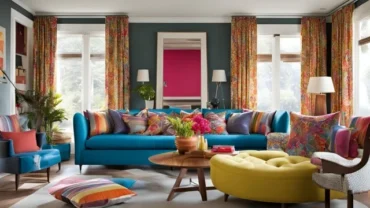Standard Swimming Pool Size For Home
Like everything else, swimming pools come in all kinds, styles, dimensions, and designs, that are used for a variety of purposes. Cost, minimum order, local codes, and resource availability will all lead to the type of pool that you will ultimately decide to create or install on your house.
Before you dive, remember what kind of swimming pool is working for both you and your family. Perhaps a small pool would be ideal for you, or do you dream of a big, manicured lawns in-ground pool complete with a pool house?
I’m talking to many pool shoppers around my near area in our local area. One of the questions that I most frequently face is:
Standard Swimming Pool Size for Home?
This is a very interesting question to ask. The size and shape of a pool have little or no way of being lifted, stretched, or even shortened once it was in the ground. The decision must be right for the first time since there is no going back.
How Does One Know What Size to Choose?
A swimming pool installation project needs a variety of aspects to consider. These considerations, among several others, also include scale, layout, and material required to create your exterior living project.
These are relevant when you outline the specifications of your pool. There are several kinds of pools, although, with several types of pool building techniques, you don’t have any restrictions about what kind of design your pool may be.
The most critical considerations are the cost of constructing your project, the construction, and the location of a swimming pool.
In this blog post, we’ll decide the size of the pool to choose from when constructing your waterfront oasis. We’ll also give you a few more smart ideas to remember while looking at the size of your outdoor swimming pool.
What is your Purpose for a Pool?
It sounds like a simple enough question, but you can decide that you need a swimming pool in your yard for several reasons when you dig deeper. It’s not just that you want to build a swimming pool.
In most situations, you have an initial explanation of why you would have a swimming pool built. So, it’s essential to analyze all the choices that a swimming pool can give you and your family, and then decide the correct size pool for your house.
Factors to Consider When Choosing a Pool Size
Before you dive in, remember to consider what kind of swimming pool works best for you and your family. Perhaps a small pool would be ideal for you, or do you dream of big, manicured lawns in a ground pool complete with a pool house?
Here are some factors to consider:
- Available Space: The size of your backyard or house will determine the size of the pool you can install as well as any other design features you wish to incorporate.
- Pool Depth: The depth of your pool is an important issue. The minimum water depth for most swimming strokes is 1.1m. The rules also recommend a minimum depth of 1.5m for a shallow dive (with a minimum length of 7.6m).
- Frequency of Use: This will affect the amount of pool maintenance required. Consider maintenance while deciding the best pool size for your purposes.
- Budget: Pools cost money to install, operate, and maintain, so long-term financial planning is typically essential when planning for long-term pool maintenance.
Standard Pool Sizes
The size and shape of a pool have little or no way of being lifted, stretched, or even shortened once it is in the ground. The decision must be right for the first time since there is no going back.
Here are some standard pool sizes:
- Inground Pools: These typically range from 10 by 20 feet to 20 by 40 feet.
- Above Ground Pools: These are usually between 10 and 24 feet in diameter.
- Lap Pools: These can be as small as 6 by 30 feet or as large as 10 by 50 feet.
- Plunge Pools: These are small, ranging from 6 by 10 feet to 8 by 20 feet on average.
- Endless Pools: These generally range from 9 by 15 feet to 15 by 20 feet.
The standard measurements available on the market are as follows:
- 6×3 metre pools (also 6×2 and 6×4 metre pools), i.e. an area of 18m²
- 7×3 metre pools (also 7×4 and 7×5 metre pools), i.e. an area of 21m²
- 8×4 metre pools (also 8×3 and 8×5 metre pools), i.e. an area of 32m²
- 9×4 metre pools (also 9×3 and 9×5 metre pools), i.e. an area of 36m²
- 10×4 metre pools (also 10×5 and 10×6 metre pools), i.e. an area of 40m²
Pool Materials
The kind of material you choose is a very important factor and can ultimately influence the size and shape of your swimming pool:
- Vinyl Liner: These pools are budget-friendly, stylish, and quick to construct. They feature material that can be customized to most shapes and sizes.
- Concrete: Concrete pools come with durability and longevity. While theoretically any shape would be possible, pool installers commonly create kidney-shaped concrete pools. The most common pool size here is 16 feet by 32 feet.
- Fiberglass: Fiberglass swimming pools are precut molded pools that come in a variety of shapes. Although they aren’t as versatile as concrete pools, there are ways to customize a fiberglass pool, including tiles, lighting, and ledges. The standard pool size for a fiberglass swimming pool is 12 feet by 24 feet.
Here are some suggestions that need to be considered:
- For leisure purposes, the pools must have had a shallow and, in certain cases, a deep end. The shallow end is suitable for youngsters, while the deep end may be used by the elderly or more skilled swimmers. This is essential as you would expect a child or adult to use the pool. It is advised to have a depth of fewer than six feet to satisfy most of the pool needs.
- Swimming laps for physical activity, this sort of pool size must have a rectangular-shaped pool. A minimum of 30 ft in length is recommended to provide adequate room for lap swimming and exercising. The swimming lane is critical, but so are the depths as well as the other aspects. The Coral Sea and Whitsunday provide a wide variety of swimming pathways for swimming laps.
- For professional and athletic divers, the depth of the pool should be more than your height and you should have a swimming pool that helps you to practice full strokes to maximize your abilities. We’ve got two pool styles that are 40-foot long and these pools are also perfect for recreation.
How Big Is Your Living Space?
Not all pool requirements are the same, so not all backyards are similar in size. So, the space you need to deal with in your backyard will determine the size of the pool you will build and every other structural element you want to add.
However, not all homes have broad outdoor areas to handle big pool sizes. It is, therefore, necessary to optimize the use of your living area when planning your pool project.
Do You Need Financing?
Long-term financial preparation is also an integral aspect of evaluating the scale of your swimming pool project. Pools cost money to build, run, and manage, but there is no perfect number to decide if you plan to maintain your pool for the long run.
It’s best to calculate your expenses for your use, position, and maintenance schedule with your contractor. Other fees to be addressed include; general pool repairs, covers, fences, chemicals, cleaning, and more. Your pool size would affect every aspect of the pool specifications.
That’s why you can consider what size or configuration of the pool is ideally suited to your budget. To help minimize the upfront costs of your pool project, there is a range of finance companies that offer financing exclusively for outdoor spaces and fiberglass installation projects.
This form of financing will provide you with the pool you want, in order to free up maintenance money as well as other associated pool requirements over the longer run.
Benefits of Having a Home Swimming Pool
Owning a swimming pool offers numerous advantages. First and foremost, it provides a convenient and private place for exercise, allowing you to swim laps and engage in low-impact workouts.
Additionally, a swimming pool creates a hub for socializing and entertaining friends and family. It serves as a focal point for outdoor gatherings and parties, enhancing the overall value and appeal of your home.
Conclusion
Identifying the appropriate shape and size of the pool for your family may not be as simple as you assumed. You’re going to have to remember a lot of things, and it may feel daunting at first.
It doesn’t take long, after all these factors, to decide that there is still a lot to do when you assess what the average size pool would be for you.
After all, the average for one person may be larger or smaller than the average for anyone else. It may be true that size matters, but size, like appearance, is in the eye of the beholder.
These are just a few of the most popular questions that anyone might consider as they decide what the average size of a pool will be. There are certainly plenty more, but it’s easier to know what you may need before building a pool than to have reservations and concerns later on.
FAQs
Standard sizes of the pool normally calculate something like 10 x 20, 15 x 30, and 20 x 40, with an average depth of around 5.5 feet.
16 x 32 Rectangle (most popular) 18 x 36 Rectangle. 20 x 40 Rectangle.
A 24-foot above-ground pool will comfortably fit 4-5 average-sized adults to swim, float and play.
Not only does a pool enhance your value in society, but it could also improve the value of your house. But possibly not as much of it as you thought. As per HouseLogic, there’s no real assurance that you’re going to get your money back. In reality, installing a swimming pool can only raise your property’s value by 7%.
They are costly because they are big, they require several different materials, and it takes a lot of skill and effort to build them.



